It's hosta shoot season, and besides just throwing them in a hot pan (which is great) kimchi makes a great hosta recipe.
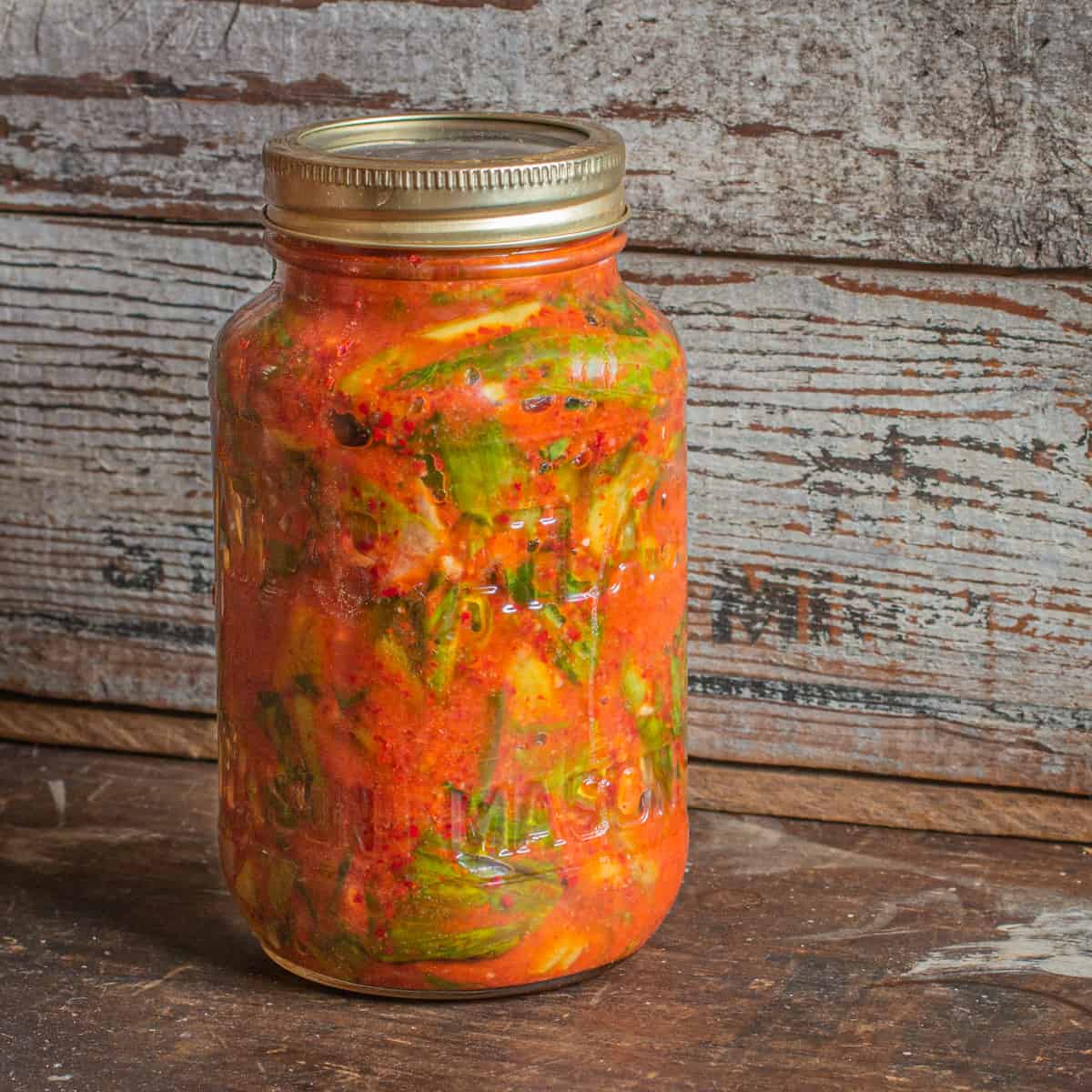
It's easy. To prepare them for fermentation, you don't even need to cook the hostas before you first, just cut them into 1 inch pieces, macerate in a bit of salt water, drain, mix with a little rice paste and a seasoning made from gochugaru chili flakes, fish sauce, ginger and scallions or ramp leaves, mix it all up, and let it sit on the counter for a week, then refrigerate.
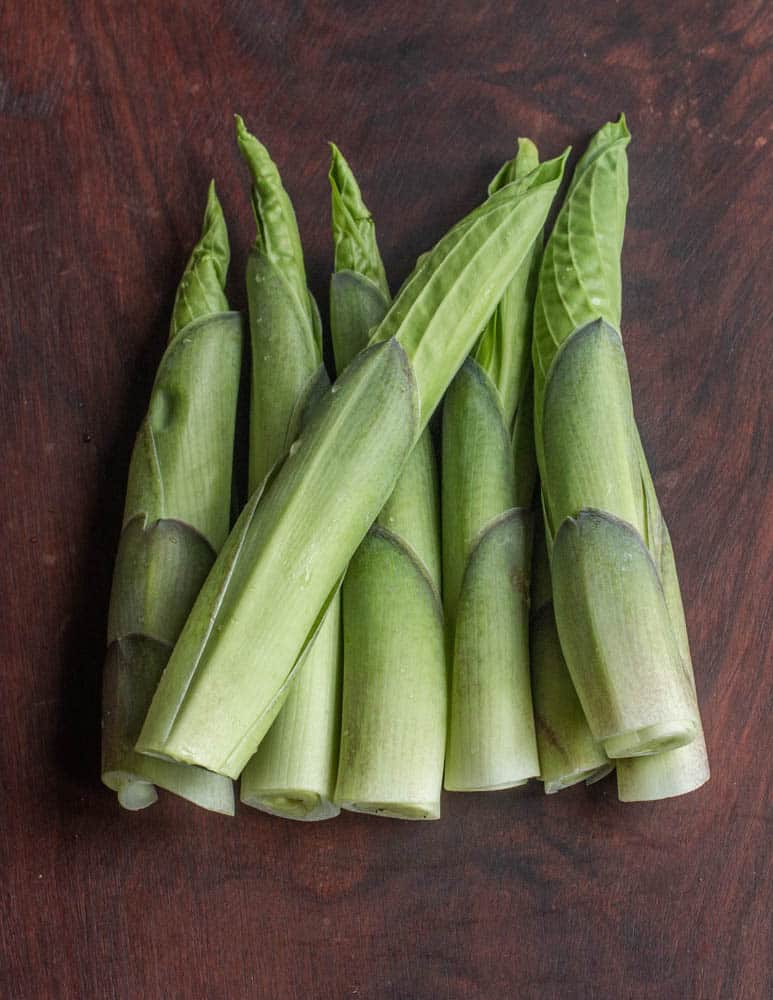
Using other shoots and plants
That being said, the basic measurements here will work with just about any plant, and would be especially good with aromatic plants like blanched cow parsnip or angelica blossoms, or even napa cabbage. Here's a few other ideas:
Purslane
Adding a few handfuls of purslane can be great. This is not available during the spring when I harvest hostas in the Midwest, but it may be available in different places where their season can overlap, or be supplemented in another way.
Day lily Shoots
Day lily shoots are similar to hostas in many ways, but, unlike hostas, many people need to have them cooked or blanched before eating, and they should never be served raw.
To use them in a preparation like kimchi, you will want to blanch them in boiling water for 15 seconds or so, then drain and allow to cool naturally without shocking in cold water. From there, you would brine the shoots as per the recipe below.
Fiddleheads
You can also add fiddleheads of your choice to this, but you will want to blanch them exactly as I call for the day lilies above, increasing the blanching time to no more than 1 minutes.
Fiddlehead ferments are also notorious for going soft during the fermentation process, so you'll want to make sure that you refrigerate the ferment after 3-4 days, which should keep them crisp.
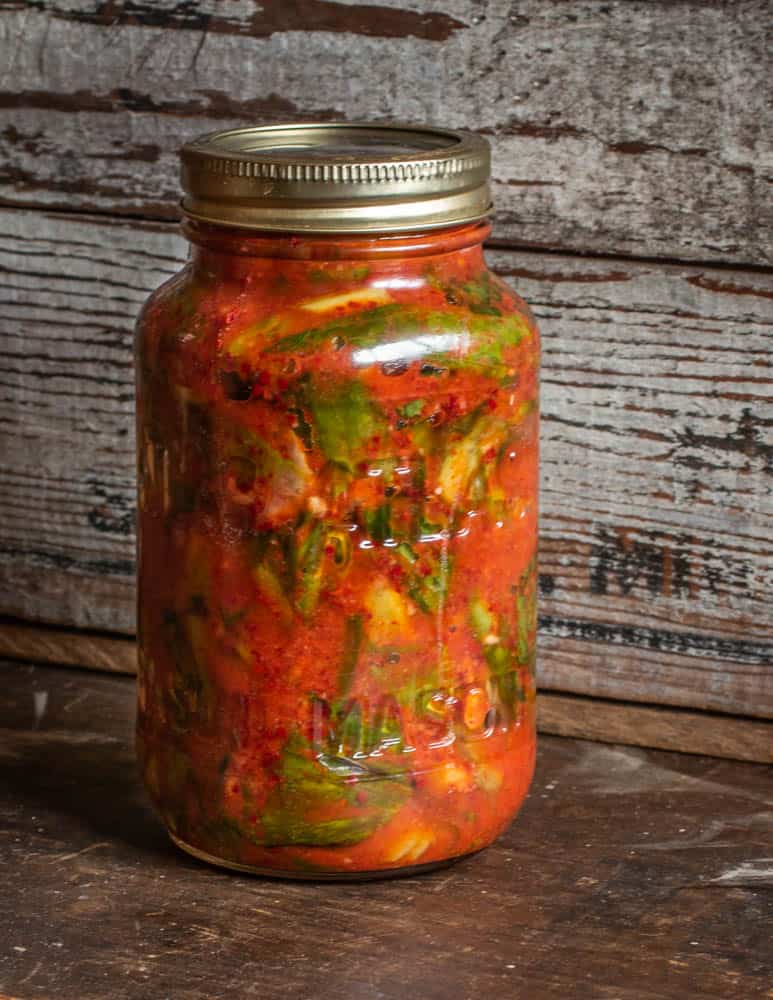
Hosta Shoot Kimchi
Equipment
- 3 cup or 1 quart mason jar. Use a plastic lid to avoid corrosion if it will be held for longer than a few weeks.
Ingredients
Hostas
- 1 pound 455 g hosta shoots (or napa cabbage, or other vegetable) (roughly 6 loosely packed cups)
- 3 ounces 85 g daikon radish, sliced into ¼-inch (6 mm) half-moons (about ½ cup)
- 3 ounces 85 g ramp leaves (or green onions, sliced into 1-inch / 2.5 cm lengths)
- Scant ¾ ounce 20 grams / 3 teaspoons kosher salt
Chili paste
- ½ cup 135 ml water
- 1 tablespoon maple syrup or equivalent
- 3 tablespoons fish sauce
- 1 tablespoon white rice flour or grind white rice as finely as possible in a coffee grinder
- ¼ cup 30 g Korean gochugaru chili flakes (coarse)
- 3 large cloves garlic minced
- 1- inch 2.5 cm cube fresh ginger, minced
Instructions
- Cut the hostas into 1-inch (2.5 cm) pieces and combine in a bowl with the radish, ramp leaves or onions, and salt, mix very well, and allow to sit for an hour or two.
- Bring the water, maple syrup, and fish sauce to a simmer with the rice flour until thickened, cool to room temperature, then mix with the chili flakes, garlic, and ginger.
- Rinse the salted hosta mixture well, drain, and pat dry with a towel if needed to remove excess moisture. Toss the hosta mixture with the chili paste, then pack into a quart (945 ml) jar.
- Screw on the lid and leave out for 2 to 5 days, depending on how sour you want the kimchi to be, removing the lid occasionally to let carbon dioxide escape, then refrigerate.
- The kimchi will for a month or longer if regularly pressed under its liquid.
Notes
Adjusting the sour flavor
As the kimchi ages the flavor will get stronger. If you want a stronger flavor faster, leave it out at room temperature for longer and it will sour quickly.Nutrition
More
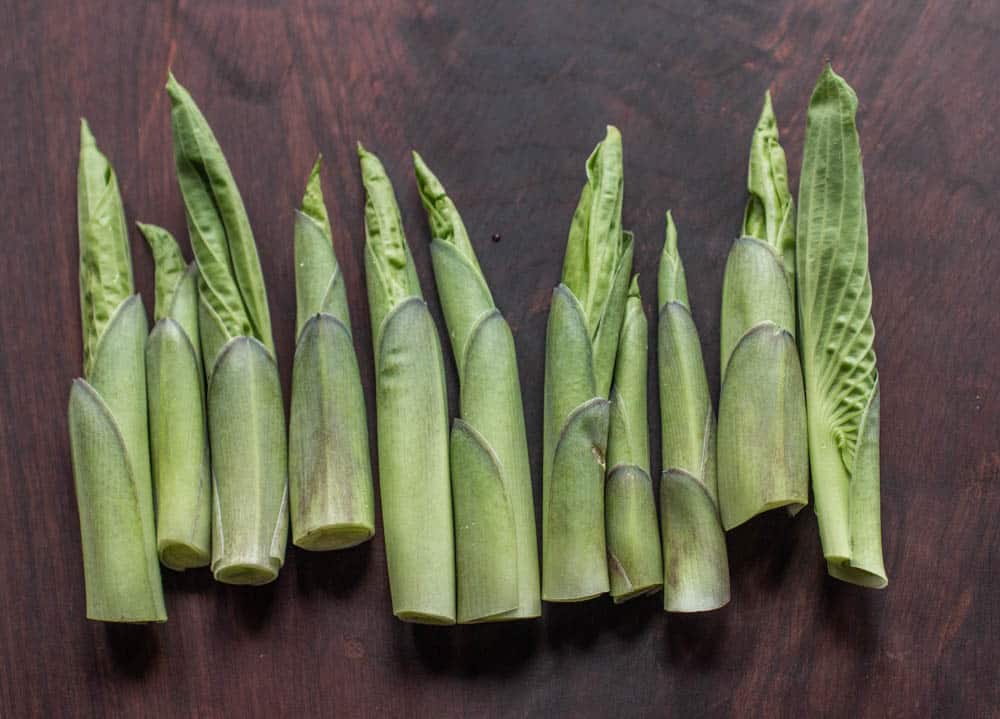

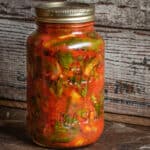
gavin
Hi Chef,
Happy New Year! I hope all is well in your world.
I have an excess of green cabbage and want to convert some in to kimchi.
I'm leaving town for 1-3 months and am tackling the traditional in-ground method of fermentation & storage in the proper onggis. I have never tried this before, but I've done a bit of research and apparently I have the right external conditions for this method (western NC). I'm not a fan of not being around to monitor the process but I have quite a bit of cabbage (50#) and am willing to go-to-vegas on some of it.
Curious if you have ever tried this method and, if so, if you had any advice?
I can probably have someone stop by once every couple of weeks, which provides some comfort. It's part experiment, part practical attempt at "setting & forgetting" for the fermentation process. I am also curious about the flavors I could achieve through this slower ferment method. From what I can gather, this long ferment approach is (or was) common in Korea and it creates a different, deeper flavor.
I have also considered skipping the room temp ferment and go straight into the fridge after assembly, then let it slow ferment - like retarding dough to bake the next day, but longer. I'd use the onggis and only pack them halfway or so with the hope that this will eliminate the need for burping. I don't have enough time before I leave for a room temp ferment so I'm looking for unique ways to slow down the process as much as possible until I can get back and take care of it.
Thanks so much,
gavin
Alan Bergo
Hey Gavin. Yes you can start it in the fridge. Once you take it out it will speed up the process. Doing it in the ground should work fine too but I haven't done it myself.
gavin
The fridge start is great news b/c nature just stepped in and has frozen everything out this way. I'll revisit the in-ground method in the Spring.
Thanks so much!
Alan Bergo
Thanks Gavin, lmk if I can help you trouble shoot anything. Have fun.
Gavin Baker
Rock solid kimchi recipe chef. I did the day lily version, using shoots instead of buds because I was too late in the year for shoots. Subbed in garlic scapes for ramps also because of season.
Is there a way to stop the slow fermentation process that this kimchi undertakes in the fridge? Heating and freezing would work but I'm concerned about ruining the integrity of it. How they tackle this in a commercial process? My intent is to use the kimchi for some dinners in the fall. Odds are it may be okay slowly fermenting, but worth asking the question.
Thanks in advance for any advice.
Alan Bergo
Hey Gavin, I've never wanted to stop or halt the fermentation process here as it improves the shelf life. The fermentation in the fridge is so slow it's a non-issue for me.
Gavin Baker
Awesome. Thanks so much!